
Reference: ZWEAF-N
Brand: ZWO
Reference: ZWEAF-N
Brand: ZWO
Reference: POA-URANUS-C
Brand: Player One
Reference: POA-ACS
Brand: Player One
Reference: AS-FRA400
Brand: ASKAR - Sharpstar
Reference: ZWASI120MINI
Brand: ZWO
Reference: AS-SET-DUO-D1D2
Brand: ASKAR - Sharpstar
Reference: ZWDC-Y-SPLIT
Brand: ZWO
Reference: AS-REDFRA400
Brand: ASKAR - Sharpstar
Banner


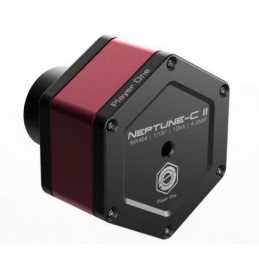






Neptune-C II is a planetary camera developed by Player One Astronomy, which adopts the Sony IMX464 1/1.8” format sensor. The 2.9um pixel size accommodates a well depth of 12ke with a total of 4.2MP (the resolution is 2712*1538), and the diagonal is 9mm.
 security
security
100% Secure Payment
 Delivery policy
Delivery policy
Express shipping of in-stock parts
 RETURN POLICY
RETURN POLICY
Express shipping of in-stock parts
Neptune-C II is a planetary camera developed by Player One Astronomy, which adopts the Sony IMX464 1/1.8” format sensor. The 2.9um pixel size accommodates a well depth of 12ke with a total of 4.2MP (the resolution is 2712*1538), and the diagonal is 9mm.
Everyone should know that the rookie IMX462 chip currently on the market has become the new favorite of planetary shooting, and IMX464, as a product of the same process, is equivalent to an enhanced version of IMX462, with a larger target surface and higher resolution. Come for a better shooting experience.
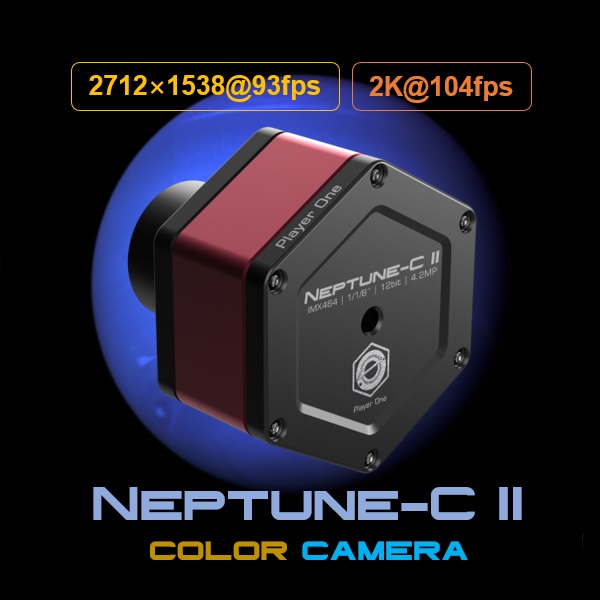
Compared with the IMX178 of the same frame, the read noise of Neptune-C II can be as low as 0.7e, and the noise is reduced by about 47%, which is as strong as IMX462!
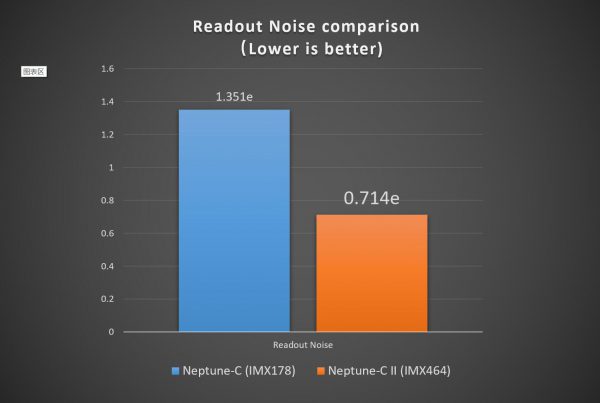
Compared with another 1/1.8 inch chip IMX178, we find that the IMX464 pixel is larger than the IMX178 at 2.4um, reaching 2.9um.
When used on the same telescope, although the quantum efficiency is not much different, the 2.9um pixel has 46% larger photosensitive area than the 2.4um pixel, which can greatly increase the single pixel to obtain more photons, which means Sensitivity has also been greatly improved.
Not only that, IMX464 also has ultra-sensitive infrared sensitivity characteristics, suitable for playing infrared photography, whether it is matched with IR685, IR850 or CH4 filters, it will give you a new visual experience.

Neptune-C II can reach 93FPS at full resolution, which is 55% higher than the 60FPS of the IMX178 chip of the same size, making it more efficient to shoot planets.
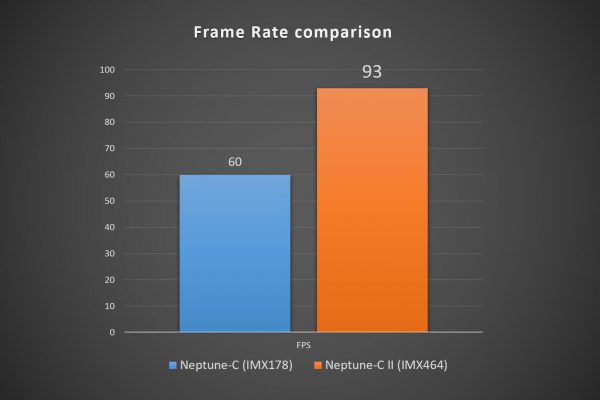
The fun thing is, with the strong ability in capturing infrared lights and the super high sensitivity, the Neptune-C II camera can be used as a monochrome camera with an IR850 filter or CH4 filter to capture infrared lights.
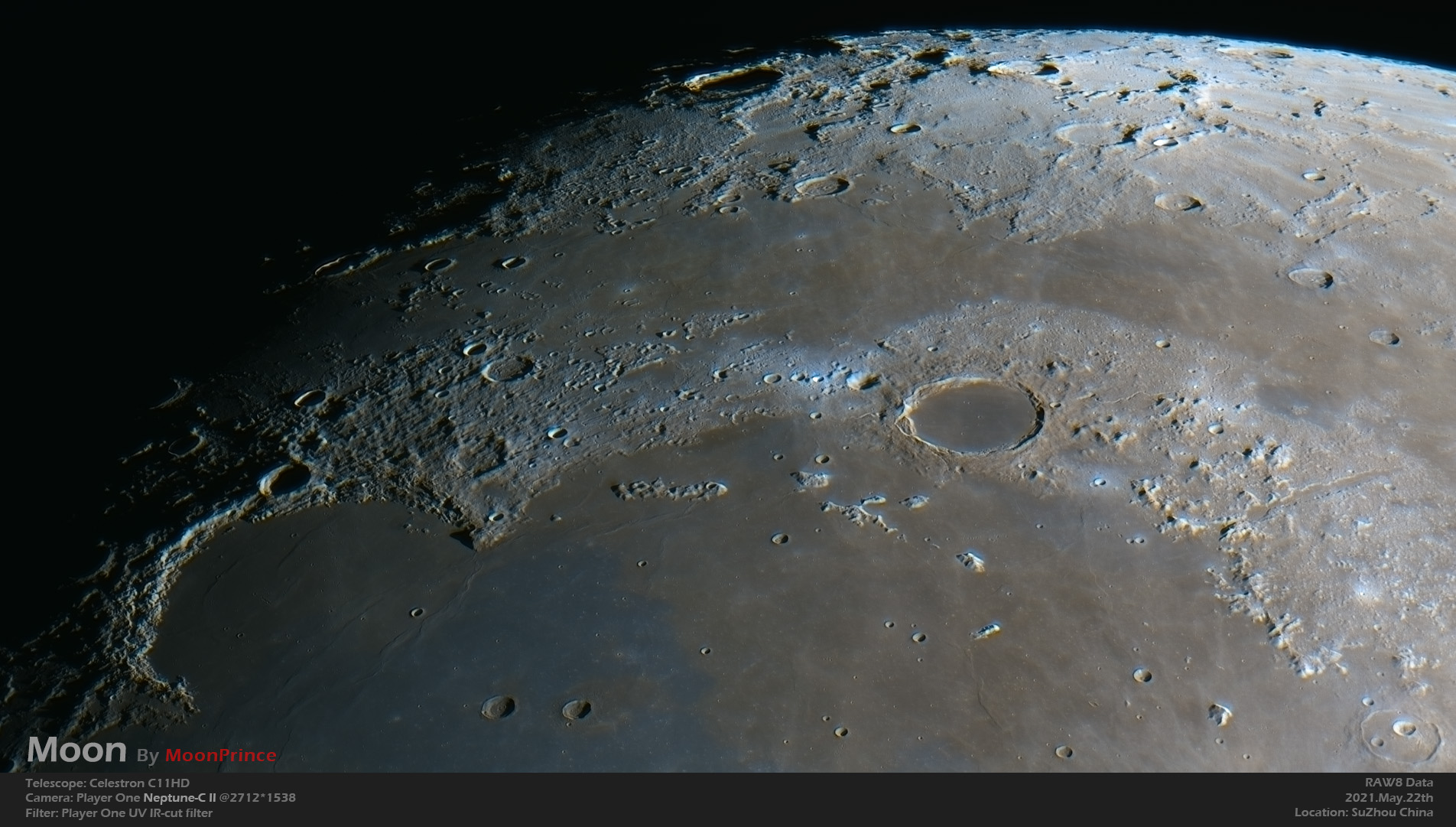
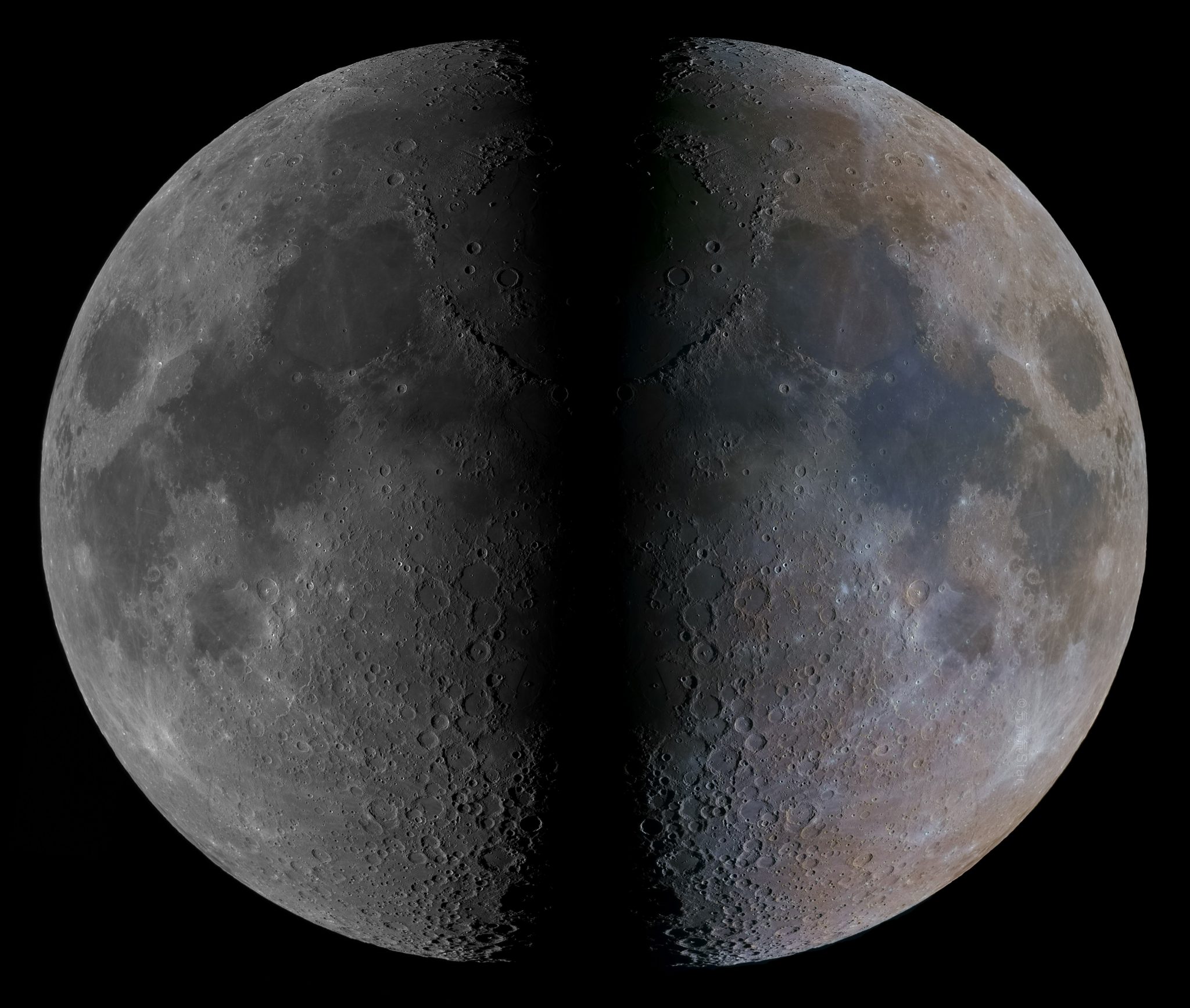
When taking solar photograph with prominence telescope, the Newton ring is annoying. Smoother solar image without Newton ring could be taken by adjusting the focal plate. Get a much smaller field curvature of the telescope.
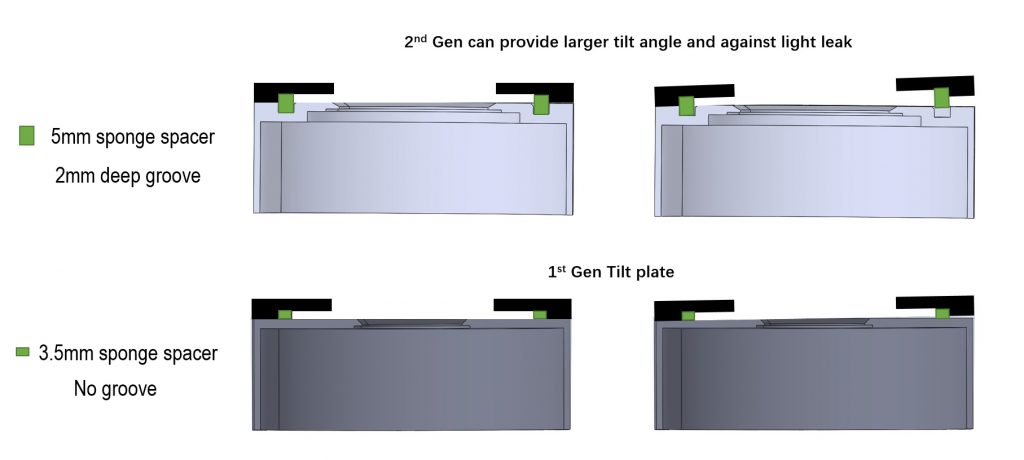
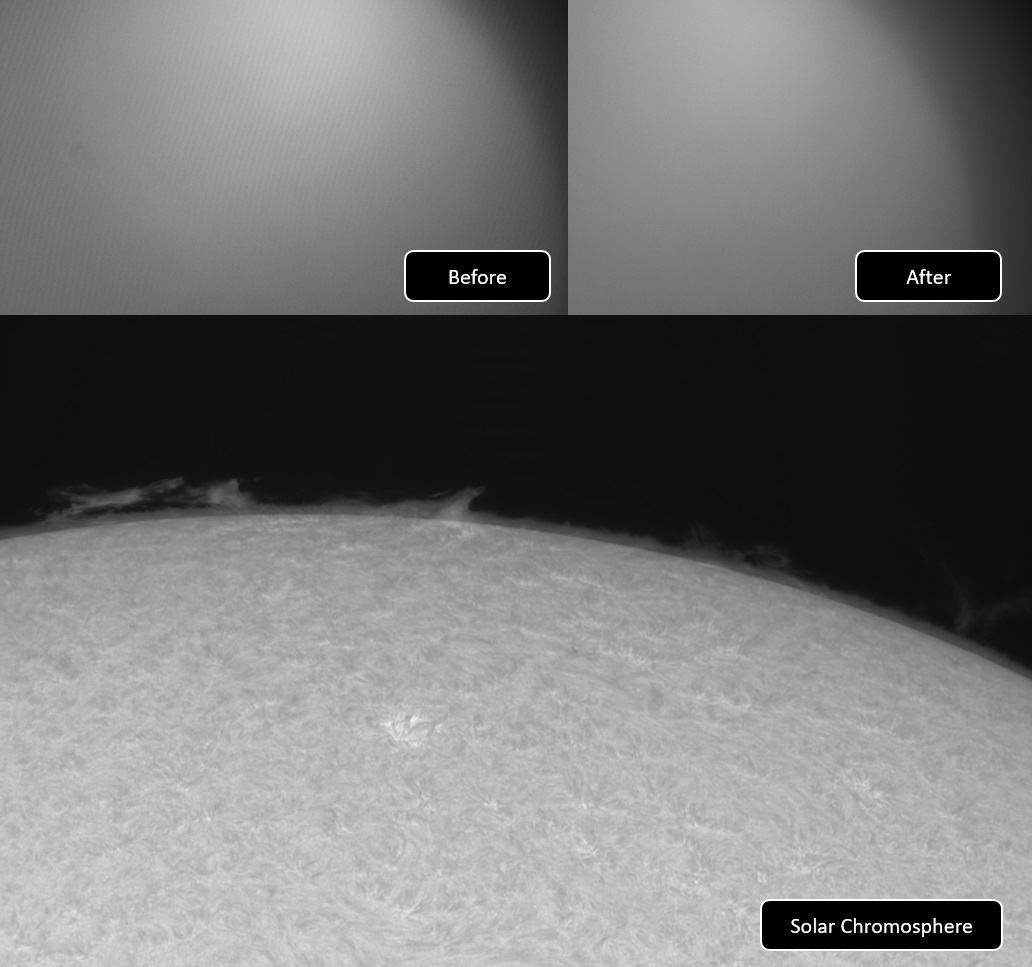
Player One Astronomy cameras are the first one who adpots the DDR3 cache in all planetary cameras in the world! It helps stabilize and secure data transmission, it effectively avoids frame dropping and greatly reduces readnoise.
With the DDR3 cache, the camera does not have high demands on computing needs any longer, it will still has excellent performance even if it is connected to a USB 2.0 port.
%20%E2%80%93%20Player%20One%20Astronomy.png)
The planetary cameras from Player One Astronomy have DPS (Dead Pixel Suppression) technology. The DPS is anaylse many dark frames to find out thoes fixed abnormal pixel and record the map in camera memory. In imaging, each exposure frames, thoes position of dead pixels will be given a median value according to the active pixels around that abnormal pixel.
%20%E2%80%93%20Player%20One%20Astronomy.png)
Player One cameras produced by the number one player ensures the safety of your camera and other equipment through overvoltage and overcurrent protection mechanisms.
When the camera is connected to the USB3.0 interface and full-resolution preview is used, it can reach 93 FPS in RAW8 mode (10bit ADC). When recording images, since the actual writing speed will be affected by the writing speed of the hard disk itself, when the hard disk writing speed is slow, the recording may not reach the theoretical speed. It is recommended that you use a high-quality solid state drive to record data to give full play to the performance of the camera.
Use the ST4 guide cable to connect the camera and the AUTO GUIDE port of the equatorial mount to do guiding
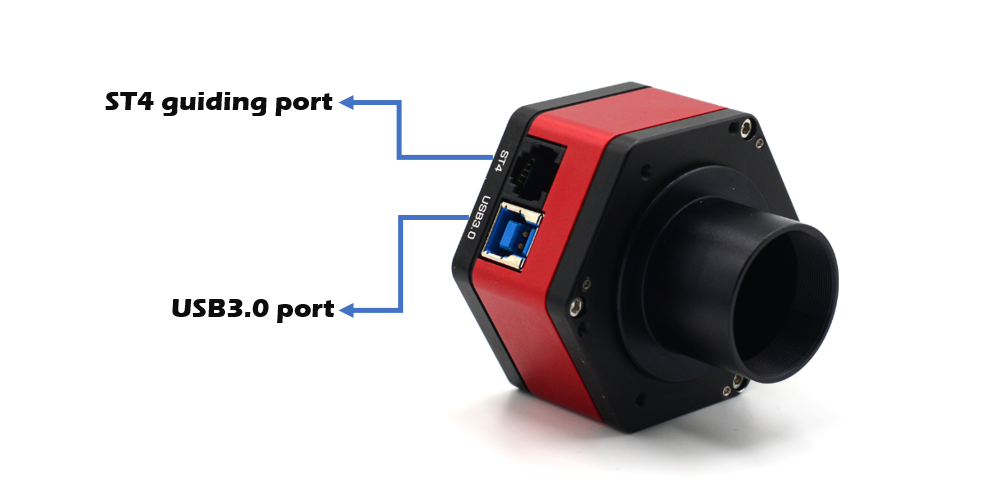
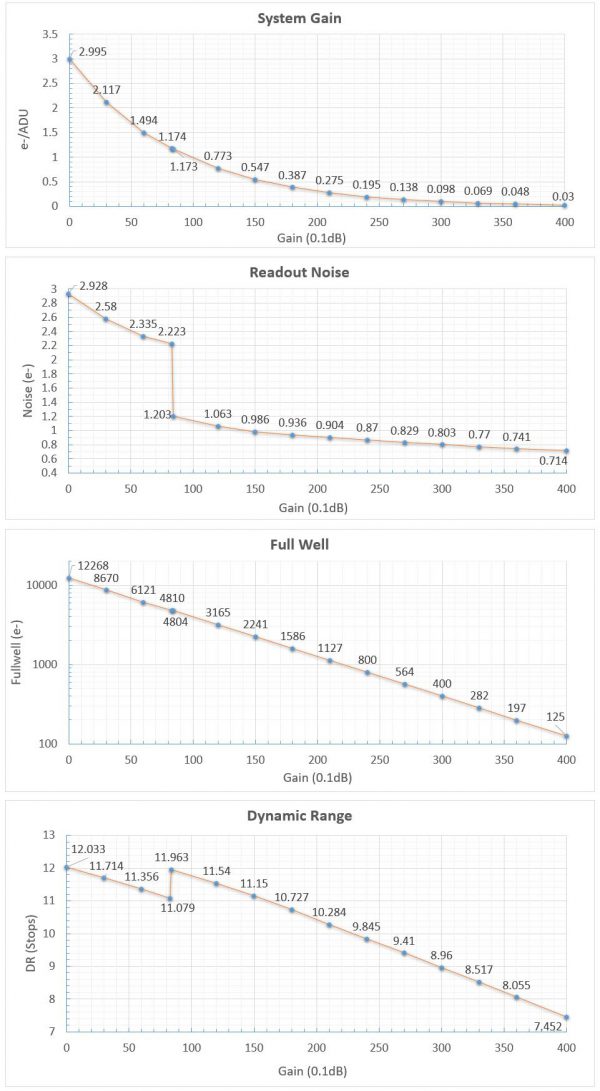
we solemnly promise that all values are obtained from actual tests. And for users, you could use Sharpcap 4 for testing. SC4 has a function called Sensor Analysis, provide a very simple way to test readout noise.
After many rigorous readout noise tests, the Neptune-C II camera can reach a low readout noise of 0.75e at a gain of 350 and around 0.71e at a gain of 400.
If you are interested in readout noise testing, you may try it yourself, which is very simple.
The Neptune-C II camera has a unique HCG mode, which will automatically turn on when the camera gain setting is >80. The HCG mode can greatly reduce the readout noise and retain the same high dynamic range as the low gain.


Data sheet
No customer reviews for the moment.
Reference: ZWASI174MINI
Brand: ZWO
Reference: ZWASI183MM
Brand: ZWO
Reference: ZWASI183MC
Brand: ZWO
Reference: POA-SATURNE-M-EX
Brand: Player One
Reference: POA-MARS-C-II
Brand: Player One
Reference: POA-APOLLO-M
Brand: Player One
Reference: ZWASI120MINI
Brand: ZWO
Reference: POA-APOLLO-M-MAX
Brand: Player One
Reference: C1-3000CSCouleur
Brand: Moravian
Reference: POA-MARS-M-II
Brand: Player One
Reference: ZWASI294MC
Brand: ZWO
Reference: C1-5000CSMono
Brand: Moravian
Reference: POA-URANUS-C
Brand: Player One
Reference: POA-NEPTUNE664C
Brand: Player One
Reference: C1-12000CSMono
Brand: Moravian
Reference: BA-2961570
Brand: Baader Planetarium

Neptune-C II is a planetary camera developed by Player One Astronomy, which adopts the Sony IMX464 1/1.8” format sensor. The 2.9um pixel size accommodates a well depth of 12ke with a total of 4.2MP (the resolution is 2712*1538), and the diagonal is 9mm.
check_circle
check_circle